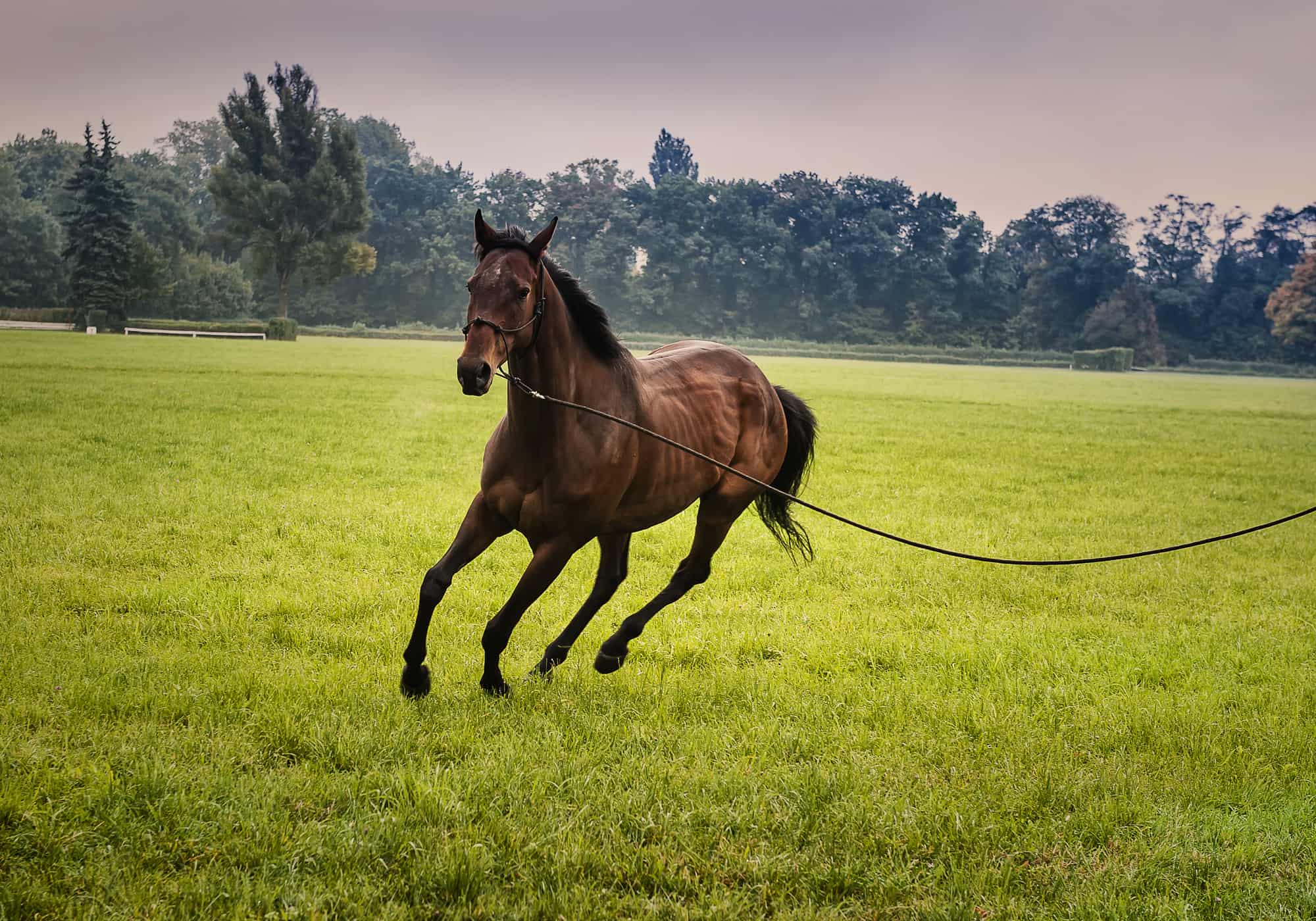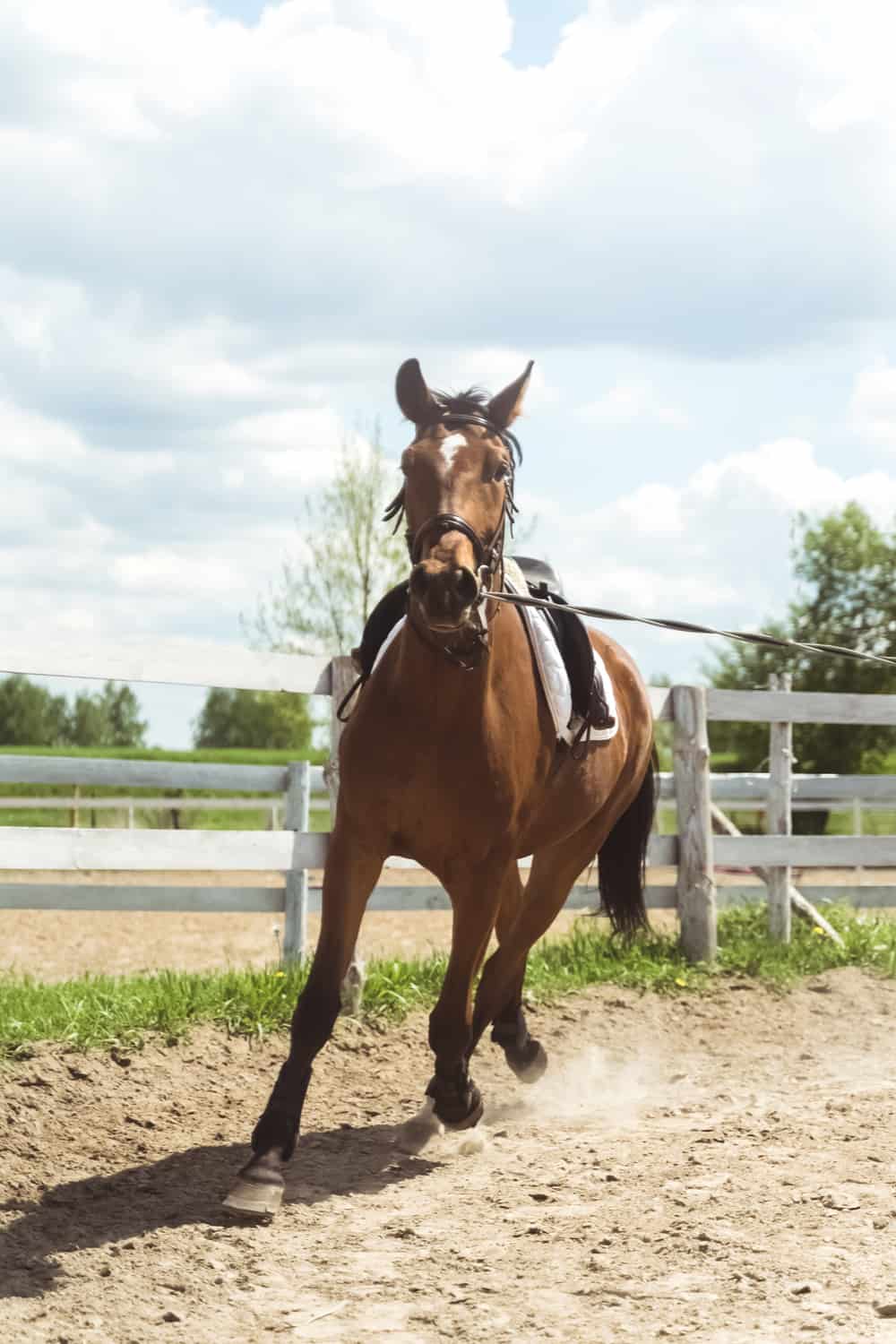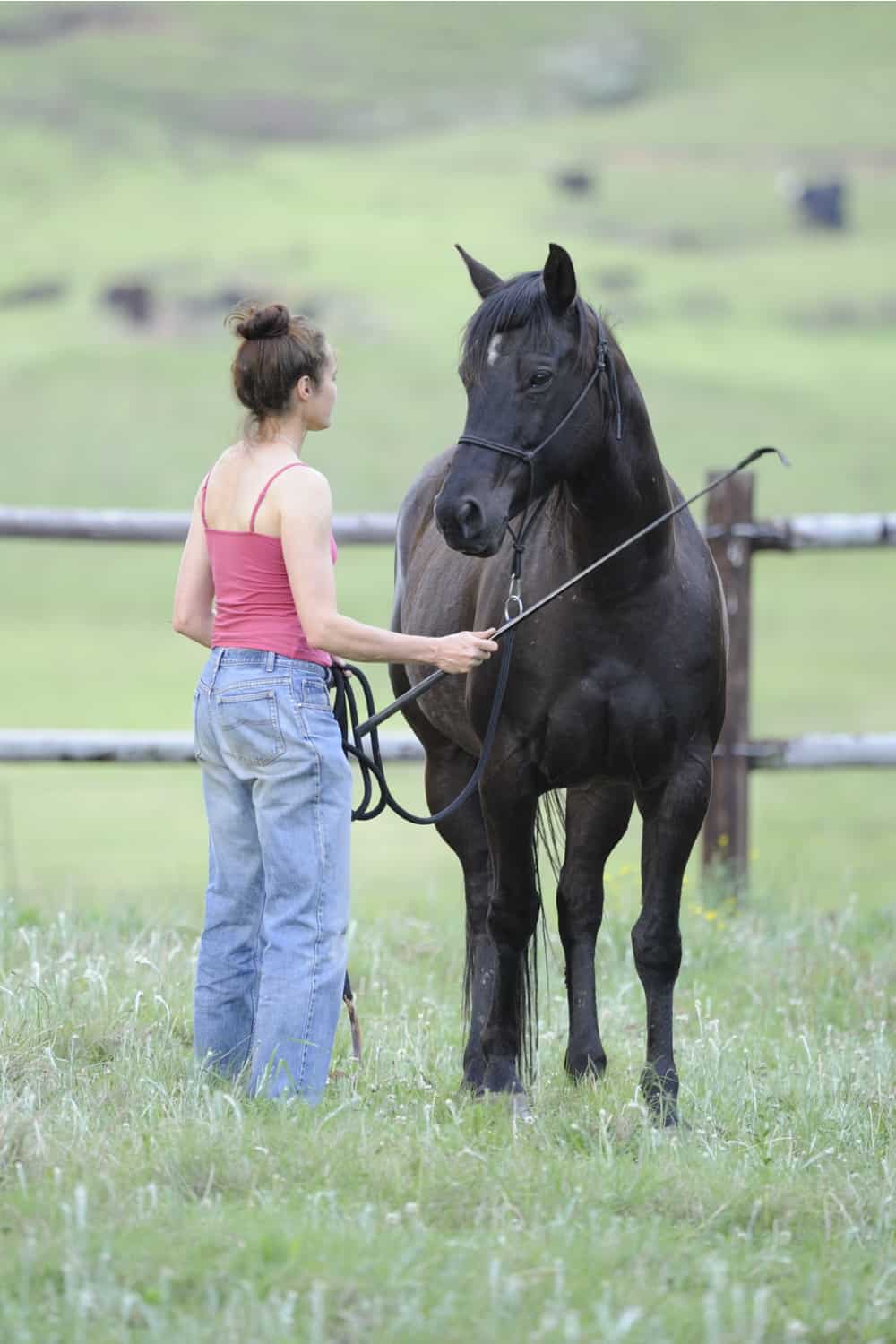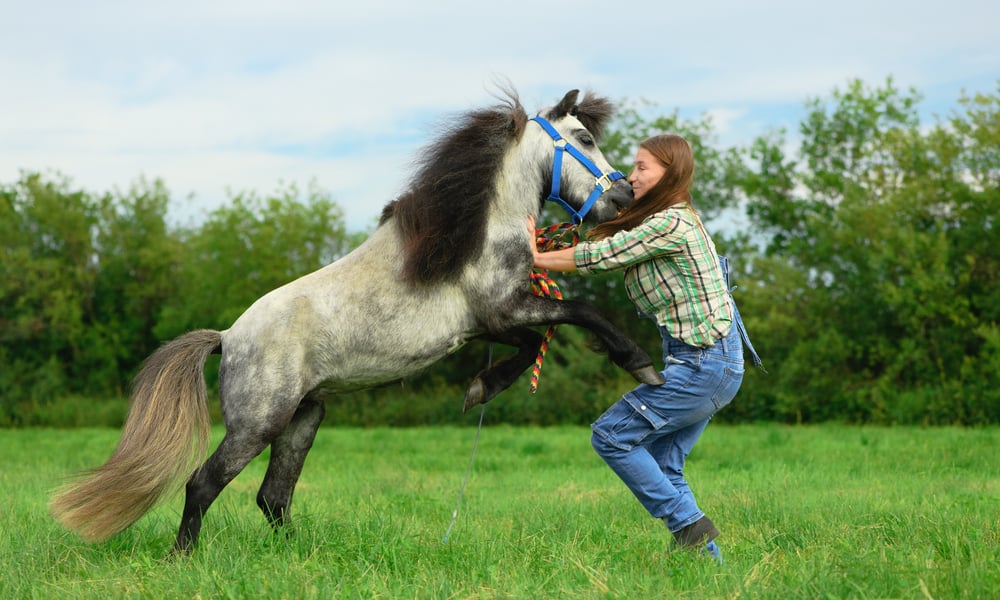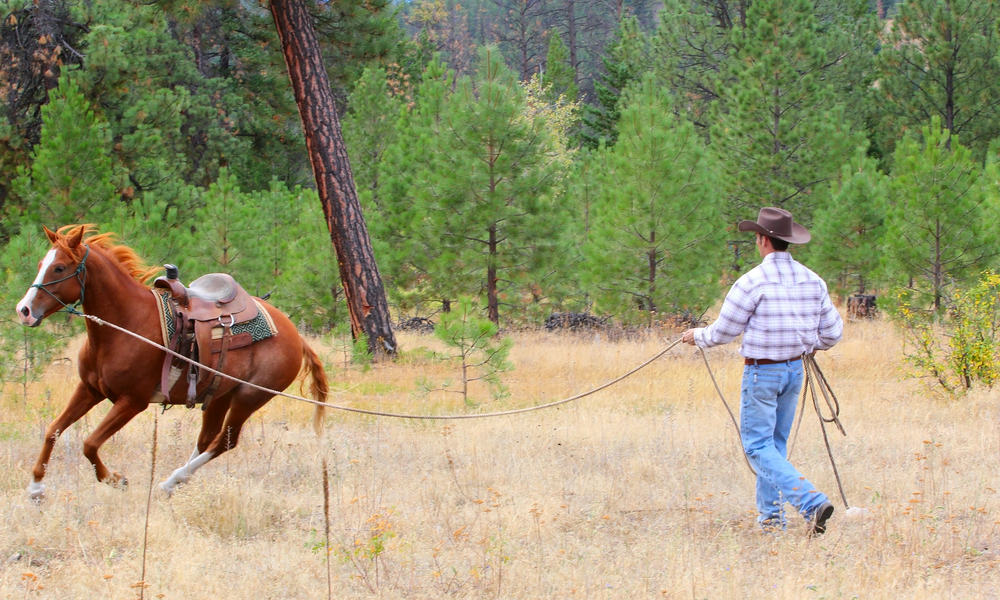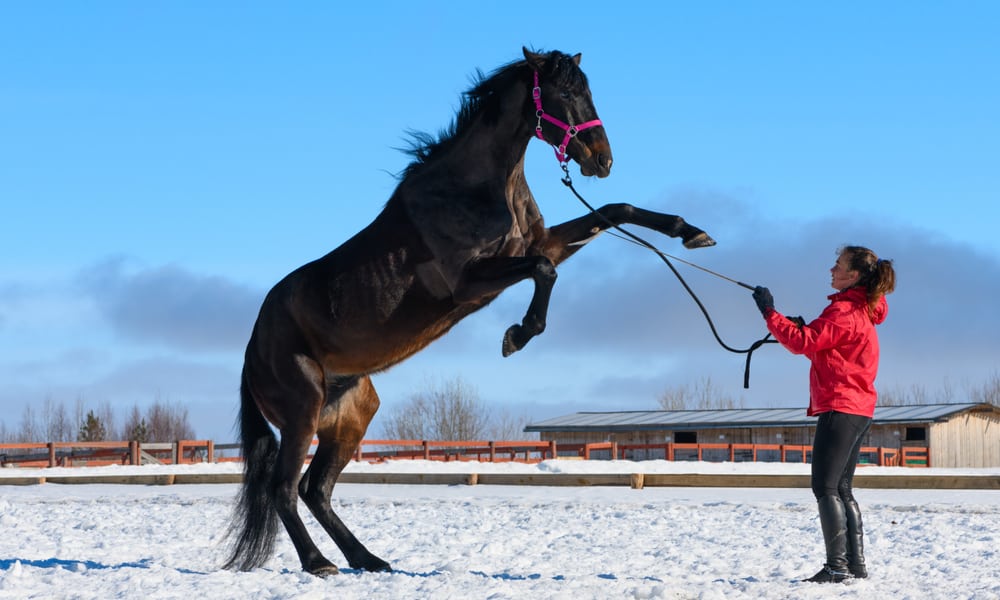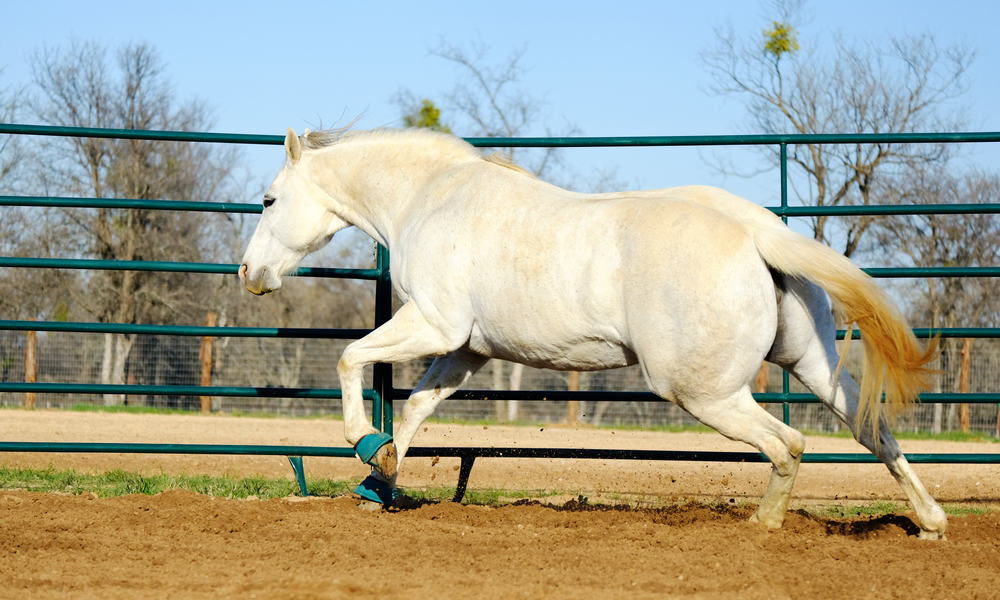Once you have a horse, it goes without question that animal requires your time, energy, and dedication. Proper nutrition, living conditions, and a stress-free environment are crucial for equine well-being, but so is regular physical activity.
Lunging your horse several times a week can help you with this task when you are too busy to ride. Still, you may wonder how to lunge a horse, especially if you are a novice equestrian. Luckily, you can quickly master this skill with some expert tips.
1. Prepare for Lunge Training
Some fundamental conditions to lunge a horse include time, plenty of space, and appropriate weather conditions. Initially, plan to lunge your animal for approximately 15 minutes three times a week, while you can prolong the training to up to 30 minutes later.
Next, provide plenty of space for both you and the horse. If you don’t have access to a round arena, the best option is to lunge your animal on an empty field.
Keep in mind that you need a space of at least 50 to 60 feet (15 – 18 m) in diameter, depending on the horse size. Larger breeds require a more spacious training ground than miniature horses and ponies.
You won’t make a mistake if you take a horse for a walk before the first lounge. That way, both you and your animal can get familiar with the terrain.
Plus, you can check for holes, bushes, and other obstacles that the horse can trip over. Ideally, the lunging area is a quiet, isolated, and debris-free place with minimum traffic nearby.
You need to pay full attention to your horse and its responses to your voice and commands. Some riders train horses even during the winter and stormy days, but this practice is only for experienced horses and skillful owners.
You probably don’t want to lunge your horse on a rainy day when the terrain is slippery and muddy, particularly if you are a beginner. Your primary goal is to prevent possible risks and injuries.
2. Necessary Equipment
Once you decide to lounge your horse, you will need adequate equipment. All you need are firm, non-slip boots, a helmet, and comfortable gloves to prevent rope burns on your palms.
Still, you should equip your horse, as well. The lunge line is the most vital thing to get. You need a 30 to 35 feet (9 – 10.7 m) long line, whether you choose a rope or a soft webbing tape.
Next, get a lunge whip. Don’t forget it serves only as a guiding tool during training and not for punishing disobedient animals. Additionally, put a cavesson or halter on your horse so you can attach the lunge line. Some riders also put a bridle, reins, and saddle on their animals.
You can also decide to put side reins and boots on your horse, but these things are not mandatory in the very beginning. Once your horse masters lunging, you can saddle or fully equip it.
Organize your lunge line once you attach the equipment to your horse. The rope is the only connection between you and the animal, so you should keep it above the ground. Make small loops you can’t trip of while moving around.
3. Learn Horse to Lunge
Begin lunging by walking parallel to your horse. Position your shoulders next to the middle of the equine body, between its withers and hips. Then, walk the horse in a circle for a while before encouraging it to move around you.
Remember that the horse will follow you if you try to walk away. Instead, gradually increase the distance between the two of you while using the line to walk it.
Your voice is a primary tool when it comes to teaching the horse to lunge. Combine it with your walk, lunge line, and whip to control its movement. Once you are in the pen’s middle, you should make a so-called lunge triangle between your hands and the horse.
Think of your hand holding a line as a driving hand while having a whip in the directing hand. The line serves a rein role during the lunge. Tighten it slightly to slow down the horse or loosen it up to give the animal more freedom.
4. Transitions and Lunge Changes
Confidence and practice are keys to successful lunging. Horses are intuitive animals so that they can interpret your body language. Prepare for attempts and fails, but reward your buddy’s effort even if it progresses only a few steps at the start.
If you want to change the horse lunging direction, you need to slow it down and place the whip in your other hand. Then, slowly organize your line and turn the route in the opposite direction.
Keep in mind that methods and signals for stopping lunging horses vary from one trainer to another. Some leave their centered position and approach a horse, while others expect that the animal comes to them once the lunge is over.
The common practice is to place yourself in front of the horse, roughly near its shoulder. You can also teach it to halt on a lunge whip movement.
5. Divide Training into Segments
Once your horse learns how to lunge, you can take it to a lunging area for a maximum of 30 minutes a day. Still, most trainers prefer starting with a short 10 to 15 minutes training for the first few weeks.
It is an excellent idea to prepare the training plan in advance and divide lunge time into sections. The training intensity always depends on the horse shape and your goals.
There are two primary options. You can lunge your horse to relax and stretch its muscles or prepare an intense training to burn off extra calories. An average schedule should include:
Starting 5 minutes
Use the start of the lunge to warm up the horse. Some trainers prefer walking the animal without using the lunge line or whip in the very beginning.
Make sure the animal walks in the circle in both directions at a slow pace. The main starting goal is to learn the horse to follow your commands and understand what you expect.
Next 10 minutes
You can gradually speed up the horse in the next phase. Signal it to go trotting or cantering, then go back to walk. Practice by using the lunge whip and line to force it to halt or change direction or speed.
Following 15 to 20 minute
The best option is to plan the most intense lunge for the mid-training section. It is a time to change the route and pace quickly and move whip from one hand to another. Don’t forget to indicate every change in advance with vocal commands and posture alteration.
Move from one transition to another, widen and narrow the circle, and practice uphill and downhill lunge if the terrain allows it.
Final 10 minutes
Allow the horse to catch its breath during the last section. Gradually slow down your animal, so it can normalize body temperature and cool off.
You can take the lunging equipment off the horse, pet it on the back, and reward it. Finally, walk together to the stable to show the horse your contentment and gratitude for obedience and patience.
Common Mistakes and Problems
Once you start lunging a horse, there are many situations you can find confusing and challenging. An equine can disobey, become stubborn, or even run away. The most substantial element of your success is patience.
Stay calm, focused, and learn to control your voice, including its tone and volume. Remember that one of the common mistakes is unknowingly raising your voice when you are nervous and agitated.
Unfortunately, all you achieve that way is to increase the problem and disturb the horse. I will give you a list of a few easily avoidable mistakes:
- Wearing inadequate footwear – In such a case, one sudden horse reaction will be enough for you to lose balance and find yourself on the ground.
- Avoiding whip use – If you tap a horse gently, it will move in the opposite direction, away from pressure. Use that to motivate a lazy or a stubborn animal rather than losing your nerve.
- Pulling against the horse – The horse can always overpower you, so you should avoid using force to discipline it. Instead, pick out a smaller, fenced pen to lunge it and a short line for better movement control.
- Using lunge as punishment – Lunging provides you with a chance to train and discipline your horse on multiple levels. So, it is wrong to use it to force your companion into obedience. If an animal misbehaves, the better option is to find a way to calm it.
- Rushing into lunge training – All horses are different, and one can learn to lunge in a few hours while the other requires months of training. Follow your instincts and watch for the horse feedback.
- If you force a horse to a rhythm that doesn’t suit it, you can cause repulsion and rebellion. In such a case, your animal can kick, run, or bite you while trying to defend itself from what it considers a threat.
Summary
Learning how to lunge a horse is an essential skill for any serious rider. It benefits your horse on multiple levels and strengthens the bond you have with it. Once you provide the necessary equipment, take your horse to a round pen for lunging several times a week and enjoy.
